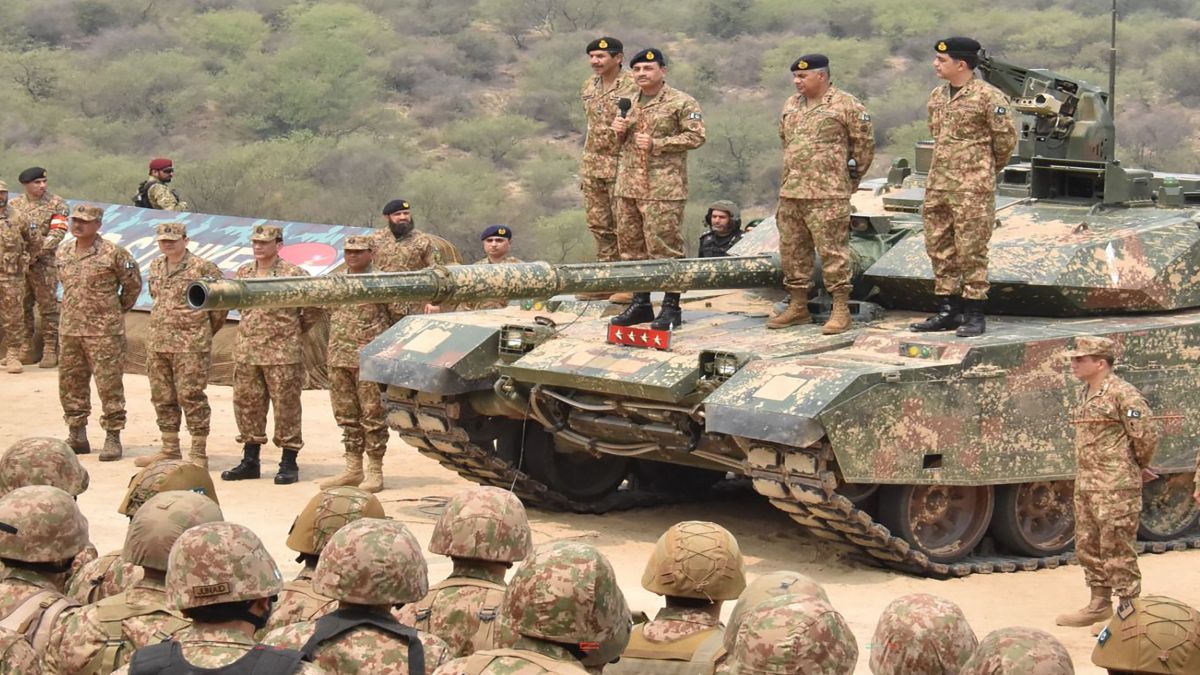On the nights of May 9 and 10, in retaliation to Pakistan’s rain of drones and missiles targeted towards India, New Delhi launched a counter-attack, targeting several air bases in Pakistan, including the noted Nur Ali Khan airbase, situated near Pakistan Army Headquarters in Rawalpindi.
Now, government sources have revealed that such was the intensity of India’s strikes that Pakistan Army Chief Asim Munir had to be moved to a fortified bunker within the General Headquarters complex in Rawalpindi.
Here’s what we have found out so far.
Munir hides out in a bunker?
On the night of May 10, India, as part of its broader retaliatory Operation Sindoor , hit six air bases across the border using air-launched precision weapons. The targets included critical air bases in Rafiqui, Murid, Nur Khan, Rahim Yar Khan, Sukkur, Chunian, Pasrur, and Sialkot, India’s Ministry of Defence said.
The strike on Nur Khan air base in Chaklala, near Rawalpindi, carries significant strategic weight. The base is home to Pakistan’s main transport squadrons and vital for logistical and strategic airlift operations, housing aircraft like C-130 Hercules and IL-78 mid-air refuelers. Moreover, Nur Khan lies in close proximity to the military headquarters, and the Strategic Plans Division, the body overseeing Pakistan’s nuclear arsenal.
But in news that would be embarrassing to Pakistan, News18 citing government sources said that Pakistan Army chief General Munir was moved to a fortified bunker within the General Headquarters (GHQ) complex where he hid for at least two-three hours. Since then, he has been moved to a safe house and has not returned to his office at General Headquarters (GHQ) in Pakistan’s Rawalpindi, reported Times Now.
The news outlet further reported that following India’s forceful strikes, Munir’s family has already left Pakistan using diplomatic passports.
There’s also speculation that Pakistan is considering to relocate the army chief’s operational base, a move that underscores the heightened sense of vulnerability at the heart of the country’s military command.
How is Munir’s absence fuelling speculation?
Notably, this isn’t the first time that rumours are swirling over General Munir’s whereabouts. Days after the Pahalgam terror attack on April 22, social media was abuzz with hashtags and memes on Munir’s location. Some reports claimed General Munir had gone ‘MIA’ (missing in action) while others reported that he had fled Pakistan.
Some even reported that Munir had gone into hiding in a bunker in Rawalpindi. In fact, chatter on Munir’s whereabouts spawned the hashtag #MunirOut with users questioning the chief’s absence.
However, as the rumours flew thick and fast, the Pakistan government sought to clear the air by posting a photo of General Munir, along with Prime Minister Shehbaz Sharif, attending an event in Abbottabad on April 26. “Prime Minister Muhammad Shehbaz Sharif, Chief of Army Staff General Syed Asim Munir (NIM) and officers of PMA Kakul in a group photo with the graduating officers of 151st Long Course at PMA Kakul, Abbottabad. April 26, 2025,” said the caption.
Who is General Asim Munir?
Since tensions first began brewing between India and Pakistan in the aftermath of the Pahalgam terror attack, the attention has shifted to General Asim Munir, who took over as Pakistan’s army chief more than two years ago.
However, unlike former army chiefs, Munir’s rise to the top has been different. Munir entered the army through the officers’ training school rather than the more prestigious route of Pakistan’s military academy. He then worked his way up the ranks quickly, becoming the director of military intelligence in 2016, followed by the director general of Inter-Services Intelligence (ISI), one of the most powerful military roles, in 2018.
In his term as ISI chief, he fell foul with then Prime Minister Imran Khan, who in turn, removed him from his post in 2019. However, Munir was moved to another senior military post and was selected by Prime Minister Shehbaz Sharif to become the new army chief in 2022.
Munir, according to people close to him, has always held a hardline view on India. He is a strong proponent of the “two nation theory” — that the Muslims of Pakistan fundamentally cannot live in the same country as Hindus.
In fact, last month he had said, “Our religions are different, our cultures are different, our traditions are different, our thoughts are different, our ambitions are different”. He had also said that Kashmir is Islamabad’s “jugular vein” and will be so and that Pakistan “won’t forget it”.
Munir has also been antagonistic against Iran and Afghanistan — launching retaliatory cross-border strikes on both countries in the past year.
It is left to be seen what’s next for Munir as both countries have now agreed to a truce. The question remains — will the Pakistan army chief from using terrorists and proxy war against India? As of now, India’s strong actions seem to have deterred Munir and the Pakistan army against any future misadventure.
With inputs from agencies
)